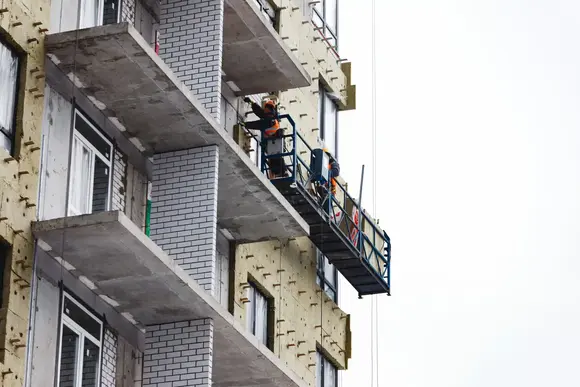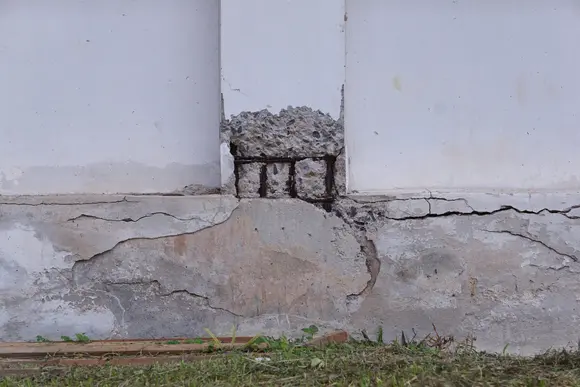As of July 1, 2021, the new Design and Building Practitioners Act 2020 is effective, and it only applies to class 2 buildings or buildings that have a class 2 part.
Changes have been made regarding regulations and other key points, and in this article, we share some light to help you understand what to focus on and how to start or repair a building project properly that complies with all Australian regulations.
The Design and Building Practitioners Act imposes several obligations on design practitioners to help them design and construct buildings according to the Building Code of Australia (BCA). As of June of 2022, the new Design and Building Practitioners Act 2020 (NSW) took effect, claiming this will restore confidence in the building industry of NSW by strictly regulating all designing and construction activities.
In essence, the new act focuses on regulating construction and design by ensuring each stage of the building process is properly documented and compliant with Australian regulations. Furthermore, the new act strictly states that no new or repair construction works will be able to start without obtaining all regulated designs from registered design practitioners (remedial engineers) and all necessary declarations of compliance have been lodged (1).
Apart from important aspects such as new construction, additions, alterations, and more, the act has provoked several changes in the remedial space.
To begin, all professional engineers that currently work on class 2 buildings must be registered, and not doing so can cause penalisation. Those with this degree working in class 2 or building with a class 2 part must be registered by July 7 (only those who are eligible to do this). Consequences of conducting unsupervised professional engineering work without registration include financial penalties, with fines up to $165,000 for a body corporate, and $55,000 for individuals.
Registered remedial engineers have new obligations as well that must be followed strictly. Some of these include complying with the Code of Continuing Professional Development (CPD), to continue learning and adapting to comply with regulations, as well as keeping records of every project and design created.
As of July 2023, the Act has been expanded to include class 3 and 9c buildings, which encompass structures like boarding houses, hostels, and aged care facilities. This means that any new construction or significant renovations in these building classes must also comply with the Design and Building Practitioners Act.
The Design and Building Practitioners Act 2022 has introduced changes to key points in the construction process such as regulated designs and compliance declarations.
Designs of a building component on a class 2 building are known as regulated designs. They are required by registered design practitioners whenever there’s building work on an existing or new class 2 building. Depending on the building work, regulated designs may not be required. A registered design practitioner is qualified to provide registered designs according to regulations and may rely on specialist advice.
As for compliance declarations, the name is a collective title that includes a combination of design, building, and principal compliance declarations. Compliance declarations are required for use in building work on class 2 buildings or buildings containing class 2 parts and the people qualified to provide this are design and building practitioners (architects, engineers, etc).
Design compliance declarations are a declaration that a regulated design conforms with the BCA made by a registered design practitioner. On the other hand, building compliance declarations state that the building work has been constructed following a regulated design created by a registered design practitioner and has been certified by a registered building practitioner as complying with the BCA.
Finally, principal compliance declarations declare that all design compliance declarations have been created and signed by registered and authorised designers.
Remedial engineering is a specialised area of civil engineering that focuses on the rectification of a structure or land that has been damaged or has caused damage, as well as those that pose a risk to property and people, after investigating the cause of damage. Remedial engineers usually deal with the cracking of buildings, concrete spalling, waterproofing, façade rejuvenation, surface and subsoil drainage, and more.
To engage a remedial engineer to conduct rectification works a few things should be considered, like the proper identification of the cause of damage, to allow them to assess the situation and propose the best course of action, including design, specifications, and construction notes.
It is essential to hire registered engineers to have a look at your building and perform several tests that can help them determine if the structure is in optimal conditions and the necessary rectification works that should be done.
Failing to comply with the Design and Building Practitioners Act in the form of not ensuring a qualified practitioner is engaged prior to commencing work can lead to serious consequences. It is crucial to engage with registered practitioners to ensure safety and that all rectifications are done properly and with the necessary paperwork lodged.
For non-compliance, the maximum financial penalty is $33,000 for companies and $11,000 for individuals, whereas penalties for making a misleading or false building compliance declaration round $22,000 or imprisonment (2 years). Sometimes both can happen in specific cases.
Penalties regarding failure or obstruction to follow an authorised officer’s direction (for investigating compliances) can reach $11,000 for companies and $,200 for individual workers.
In addition to these compliance obligations, the recent amendments have made it mandatory for all registered design and building practitioners to hold adequate professional indemnity insurance.
Effective July 1, 2023, this insurance must cover any potential liabilities associated with compliance declarations and the work performed under these declarations. This requirement is crucial for protecting both the practitioners and their clients, ensuring that any issues that arise during the building process are adequately addressed.
MJ Engineering Projects has over 15 years of experience in the remedial works consultant industry. The Sydney-based firm focuses on the delivery of successful remedial repair projects for residential, commercial buildings, and infrastructure projects.
We offer Remedial Superintendent Services, in which on behalf of the Owners Corporation, we conduct rectification work and structural repairs. This ensures that all works are completed according to specifications, and costs and within the specified timeframes.
Apart from this, we also carry out Diagnostic Investigation Services to identify building defects before conducting remedial work. This is crucial to stay within budget and ensure all works are done properly.
As for our Technical Specification Services, we are able to describe the specific requirement a building repair project should be met in order to comply with BCA standards. This will also allow contractors and stakeholders to access information regarding equipment, materials, and components needed in the project.
Contact us for further details about our services and how we can help with your specific project and needs. Whether you’re a building and design practitioner starting a new build or need remedial repairs, our team is here to ensure your project’s compliance and success.

What’s more, crucial factors to have in mind when facing structural issues and why consulting a skilled team of engineers can make things easier for you when considering all aspects of facade rejuvenation for your building.

Balconies are one of the most important parts of a building that need to comply with regulations to ensure safety for all. If not looked after properly, they can quickly deteriorate and become a threat.

A remedial engineer is an engineer who specialises in repairing structures and land that have failed or been damaged, and pose a danger to people and property.